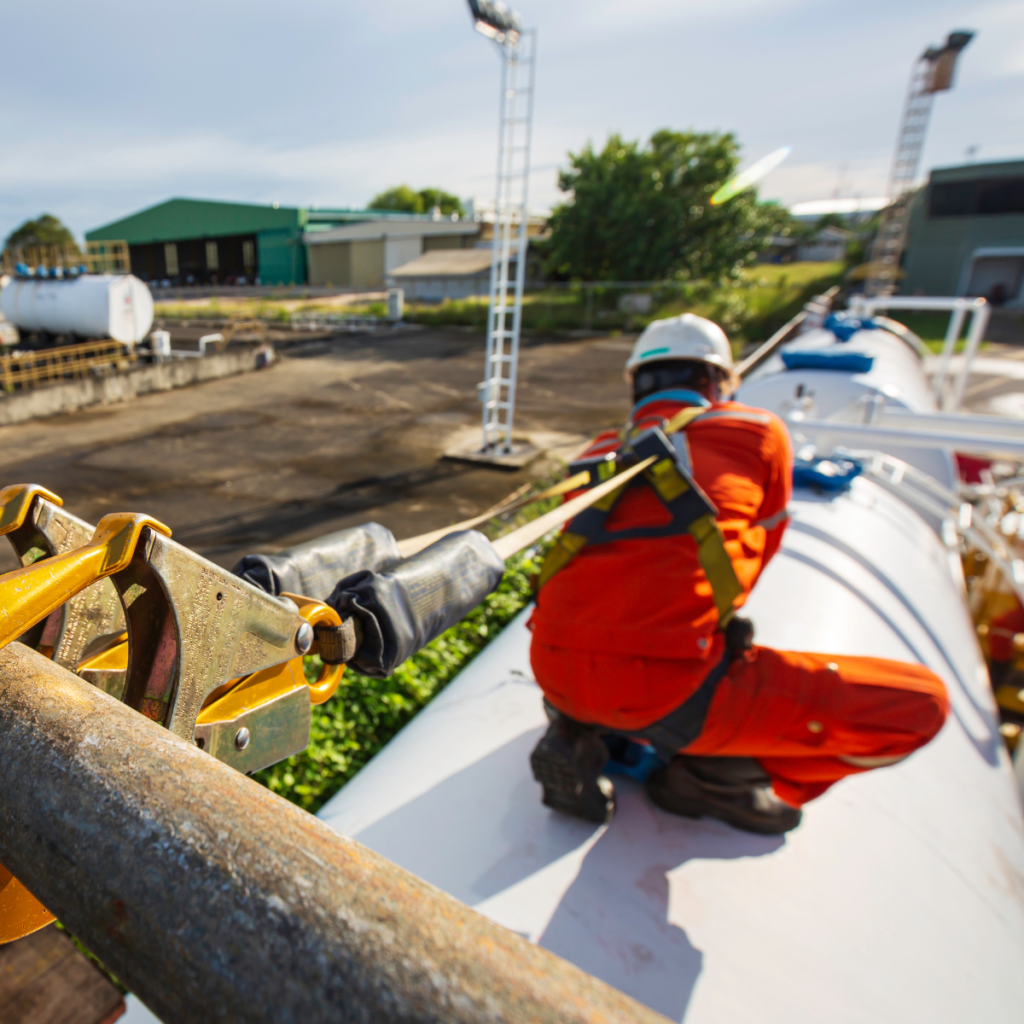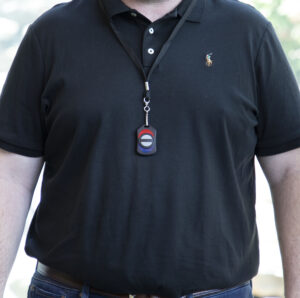
Man Down Alarms & Safety Systems: Protecting Lone Workers in High-Risk Environments
Why Man Down Safety Matters
Imagine a construction worker pinned under equipment, a healthcare professional facing an aggressive situation during a home visit, or a utility technician suddenly experiencing a medical emergency. In each case, seconds matter. The ability to call for help instantly can make the difference between a close call and a tragedy.
That is why panic buttons in man down alarms and safety systems are so critical. They give workers direct control to trigger an emergency alert at the very moment they realize they are in trouble. No delays. No uncertainty. Just one press that ensures supervisors, colleagues, or emergency responders are notified right away.
In this article, we’ll explore why panic buttons are a cornerstone of modern man down safety systems, how they are transforming workplace safety across industries, and what organizations should consider when implementing them.
What Is a Man Down Alarm with a Panic Button?
A man down alarm equipped with a panic button is a worker’s instant lifeline. Unlike radios or phones that require dialing or complex interaction, a panic button is simple, fast, and intuitive. In a single press, it sends an alert through the connected safety system, ensuring help is on the way.
Key features typically include:
- Single-touch activation that bypasses complicated steps.
- Visible or discreet placement depending on worker needs (belt, wrist, lanyard, or embedded in ID badges).
- Reliable communication channels such as cellular, Wi-Fi, radio, or satellite.
- GPS tracking so responders know exactly where to go.
- Escalation protocols that alert multiple people if the first responder doesn’t acknowledge.
The panic button is a direct guarantee that workers have control in dangerous situations.
The Evolution of Panic Buttons in Man Down Safety Systems
Early Use Cases
Panic buttons first appeared in high-risk industries like banking and retail, where staff needed a discreet way to call for help during robberies or aggressive incidents.
Expansion into Lone Worker Safety
As awareness of lone worker risks grew, panic buttons became a standard feature in man down alarms. From oil rigs to warehouses, the ability to summon help instantly became recognized as essential.
Integration into Smart Safety Platforms
Today, panic buttons are connected to comprehensive man down safety systems. When pressed, alerts trigger entire response workflows, update monitoring dashboards, and send GPS coordinates to first responders.
Why Panic Buttons Are Critical for Lone Workers
When employees work alone, they don’t have a colleague nearby to intervene. If they encounter danger, they must rely on their own ability to call for help. Panic buttons ensure they can do so instantly and reliably.
Consider these scenarios:
- A truck driver on a long-haul route experiences chest pain and needs medical assistance.
- A field technician encounters unexpected hazards while inspecting remote equipment.
- A care worker feels unsafe during a home visit and needs immediate backup.
In each case, a panic button empowers the worker to take action and know that their alert will reach the right people in real time.
Industries That Rely on Panic Button-Enabled Man Down Safety Systems
1. Utilities and Energy
From high-voltage risks to confined spaces, workers in this sector face serious hazards. Man down alarms allow them to alert control rooms instantly if something goes wrong.
2. Construction and Infrastructure
Falls, equipment accidents, or even sudden structural failures demand rapid response. A panic button ensures that help is called without delay.
3. Manufacturing and Warehousing
In busy, noisy facilities, a worker in distress may not be heard. A discreet panic button ensures their alert cuts through the noise and reaches supervisors immediately.
4. Healthcare and Social Care
Nurses, paramedics, and caregivers often face volatile situations. Panic buttons give them reassurance that backup is only one press away.
5. Transportation and Logistics
Whether on the road, in a remote terminal, or at sea, panic button alerts paired with GPS allow emergency teams to locate and assist mobile workers quickly.
Core Features of Panic Button Man Down Alarms
To provide maximum protection, panic button solutions are most effective when combined with broader safety capabilities:
- Discreet and Accessible Design – Buttons should be easy to find in emergencies, even under stress.
- Multiple Alert Pathways – Messages sent through cellular, Wi-Fi, satellite, or radio to ensure redundancy.
- GPS and Indoor Location Tracking – Critical for guiding responders to the exact location.
- Tiered Escalation Protocols – If the first recipient doesn’t respond, the system automatically escalates the alert.
- Centralized Dashboards – Supervisors see live updates and can coordinate response efforts.
- Integration with Other Safety Tools – Panic buttons should connect seamlessly with radios, apps, and monitoring systems.
Benefits of Panic Button-Driven Man Down Alarms
1. Immediate Emergency Alerts
With a panic button, there’s no wasted time. Workers know that pressing once will instantly notify their team or emergency responders.
2. Empowered Workers
Knowing they have direct control over their safety reduces anxiety and builds confidence. Employees feel supported even in isolated or dangerous conditions.
3. Compliance and Risk Management
Lone worker regulations in many regions require employers to provide reliable emergency communication. Panic buttons help organizations meet those requirements while reducing liability.
4. Reduced Response Time
The faster an alert is raised, the faster help arrives. Panic buttons cut critical minutes off response times.
5. Safer Work Culture
When workers see employers investing in panic button-enabled safety systems, it builds trust and reinforces a culture where safety comes first.
Challenges in Implementation
Despite their simplicity, panic button systems can face obstacles during deployment:
Device Acceptance: Workers may resist wearing additional gear.
Connectivity Gaps: Remote or underground sites require systems that can use multiple communication channels.
False Alarms: Training is key to reducing accidental presses while still ensuring accessibility.
Integration Complexity: Ensuring the panic button ties into broader safety platforms requires planning.
Organizations that invest in training, awareness, and pilot programs are best positioned for success.
The Future of Panic Button Safety Technology
Panic buttons are evolving from simple manual alerts into intelligent, connected tools that offer even greater protection.
Innovations include:
- Smart panic buttons with two-way communication so workers can confirm help is on the way.
- AI-enhanced systems that analyze patterns of use and provide predictive safety insights.
- Wearable integrations into smartwatches, badges, and personal protective equipment.
- Cloud-based platforms that automate reporting, compliance documentation, and large-scale monitoring.
In the future, panic buttons will remain the most human-centered feature of man down safety systems, combining simplicity with cutting-edge technology.
Best Practices for Choosing the Right Panic Button Solution
When selecting a system, organizations should:
- Assess Worker Risks – Identify the most likely emergencies employees could face.
- Prioritize Ease of Use – Workers should be able to activate the panic button even under stress.
- Test Connectivity – Ensure alerts can be transmitted in all environments where staff operate.
- Plan for Scalability – Choose a system that can expand to cover larger teams or new locations.
- Provide Training – Make sure employees know when and how to use the panic button without hesitation.
Tip: Pilot the system with a small team first, gather feedback, and refine before scaling organization-wide.
Conclusion: Safety in the Palm of Your Hand
Man down alarms and safety systems are only as strong as their ability to connect workers to help in the moment they need it most. Panic buttons are the ultimate expression of that connection: simple, immediate, and reliable. They ensure that no worker, no matter how remote or isolated, is ever truly alone.
At TeamAlert, we believe every employee deserves that reassurance. By equipping workers with panic button-enabled safety systems, organizations can protect lives, meet compliance standards, and build a workplace culture where safety always comes first.
You can see how a panic button-enabled man down alarm can transform your safety programs and your employees’ well-being. Schedule a demo or try TeamAlert for free today.

